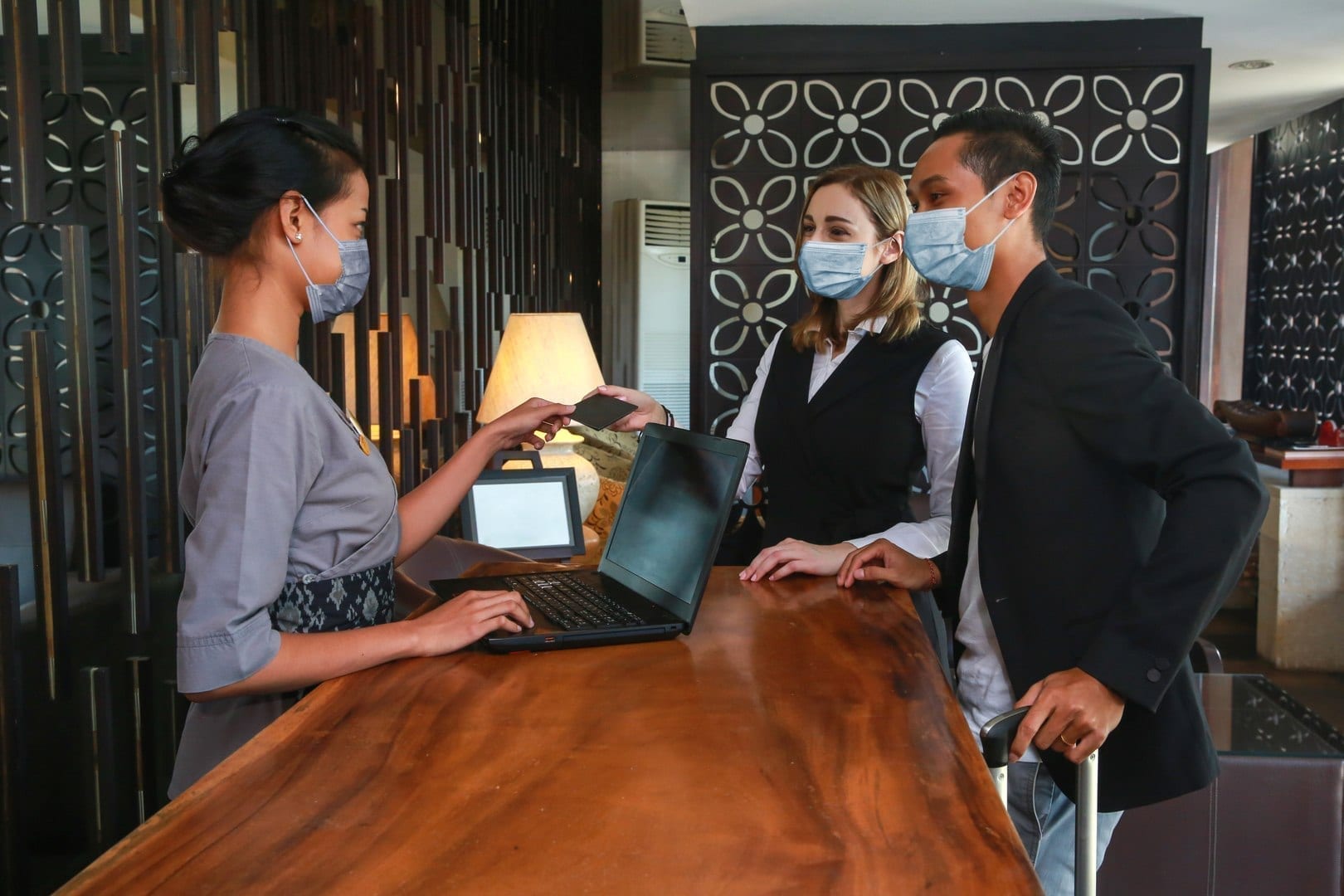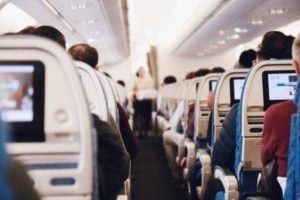
Several high-profile business names have recently shared their opinion on the future of business travel in the wake of the ongoing COVID-19 pandemic, which has taken close to 2.5 million lives, ravaged economies, devastated supply chains and international trade, and cost the global travel industry an estimated $935 billion. While both leisure and business travel volumes dropped precipitously in March and April of 2020, Microsoft co-founder Bill Gates focused on business travel in his recent comments via video interview for the New York Times, predicting that “over 50% of business travel and over 30% of days in the office will go away.” He based his prediction on his own experiences, particularly witnessing the normalization of video conferences replacing in-person meetings for most of the past year.
 Before airlines, travel management companies, business event planners, and others hear these comments and prepare to close shop permanently, it may be wise to pause and examine these predictions and the complex dynamics impacting the future of business travel—which may not be as dire a scenario as Gates portrays.
Before airlines, travel management companies, business event planners, and others hear these comments and prepare to close shop permanently, it may be wise to pause and examine these predictions and the complex dynamics impacting the future of business travel—which may not be as dire a scenario as Gates portrays.
One point that rings most true about Gates’ prediction is the likelihood of a more hybrid remote work force post-COVID. By some calculations, 70% of the US workforce will work remotely at least five days a month by 2025. “More than 90% of our employees worked in one of our global office locations pre-pandemic,” said Onyx CenterSource CEO Mark Dubrow. “Despite the incredible pressures of the pandemic on our business, I was pleased at the relative ease with which our workforce transitioned to remote work without missing a proverbial beat in productivity and collaboration. I see a future where companies are more flexible with work-from-home days for employees, and, in many cases, more open to hiring fully remote workers in other states or countries, removing somewhat arbitrary limitations on the available talent pool for key positions.” This is a significant benefit seeing as companies spend an average of just over $4K to recruit a single employee, and particularly benefits the technology sector, which predicts a skill shortage of 6 million tech workers by the year 2030 in the US alone. A broader hiring pool will help companies fill critical roles.
Business Travel COVID-19 Impact In Numbers
We know that business travel has been severely impacted by COVID-19; perhaps a lesser discussed data point is that certain segments of the workforce were already traveling less than others pre-pandemic. According to American Express, millennials were already the largest generation of business travelers in 2015, with 38% of millennials traveling for work compared to 23% and 8% of Gen-Xers and baby boomers, respectively. Is this due to personal preference differences across age groups, the types of job roles each of these segments are likely to hold, or other factors? We know that the “digitally native” younger workforce values both community and globalization, and feels empowered by technology. While booking an international flight and hotel stay 20 years ago may have involved multiple phone calls (perhaps to a hotel staffer doing business in a different language), we now have technology that facilitates this exchange in a matter of minutes online or via an app. We also know that pre-COVID business travel was on the rise—with business tourism spending increasing over 42% from 2010 to 2019, from 902 billion to 1.2 trillion.
Not only are many segments of workers showing interest in business travel, they are increasingly blending business travel trends with leisure—such as tacking a long weekend on to the end of a conference to explore the city, a phenomenon referred to as “bleisure” travel, which according to a National Car Rental survey, 81% of millennials have engaged in. We predict that Generation Z, most recent to enter the workforce, will think similarly to their millennial counterparts in their interest for this modern type of business travel—after all, the two generations display similar travel preferences. Allowing these burgeoning career people to travel and capture those important life experiences both through work and leisure helps with recruitment and retention of top talent. In fact, younger generations are almost twice as likely to want to travel for business. Career satisfaction is increasingly dependent upon the extent to which an employee can seamlessly blend personal life with work life—or at least, toggle between the two with relative ease. The hypothesis here is that a high percentage of job applicants who might find a remote or hybrid position attractive are often seeking increased flexibility to accommodate experiences like travel. In a way, bleisure travel is a concrete manifestation of this.
Gates willingly admits that he perceives a lack of organic work culture in remote collaboration, and that it does not seem to be an adequate replacement for an office environment: “The fact that the software doesn’t have any sort of serendipitous thing of people who you run into after the meeting or gathering things…there’s some work to be done there.” Virtual meetings still lack the personal touch and sense of connection that an office can provide. Rather than see this comment as a resignation to a bleak culture-weak work experience in the future, this can be interpreted as a challenge to organizations to not only find ways to engage employees working remotely day-to-day, but also to prioritize in-person collaboration—be it quarterly, annually, or whatever interval works best—when it is safe to do so.
Business Travel: New Policies and Management
 Business leadership will be looked to for company policy updates regarding travel, and many leaders have experienced the positive impact that business travel creates firsthand. “I struggle to imagine a workplace culture, or a business-to-business partnership, being well-cultivated without some form of in-person collaboration,” said Dubrow. “While video conferencing can certainly support key business relationships in the short term, it cannot replicate the emotional bond and innate need among people to connect. I believe business is built on strong relationships and delivering value to your customers. Companies that continue to invest in face-to-face interactions will ultimately gain a competitive edge in customer retention, securing new business and developing loyal and enthusiastic employees.” This is supported by data – one Oxford Economics study concluded that for every dollar invested in business travel, companies realized $12.50 in incremental revenue. That return on investment for businesses is difficult to overlook. And with increasingly global teams, these in-person sessions may even require longer travel, resulting in more miles logged to connect with colleagues.
Business leadership will be looked to for company policy updates regarding travel, and many leaders have experienced the positive impact that business travel creates firsthand. “I struggle to imagine a workplace culture, or a business-to-business partnership, being well-cultivated without some form of in-person collaboration,” said Dubrow. “While video conferencing can certainly support key business relationships in the short term, it cannot replicate the emotional bond and innate need among people to connect. I believe business is built on strong relationships and delivering value to your customers. Companies that continue to invest in face-to-face interactions will ultimately gain a competitive edge in customer retention, securing new business and developing loyal and enthusiastic employees.” This is supported by data – one Oxford Economics study concluded that for every dollar invested in business travel, companies realized $12.50 in incremental revenue. That return on investment for businesses is difficult to overlook. And with increasingly global teams, these in-person sessions may even require longer travel, resulting in more miles logged to connect with colleagues.
Key moments in an employee’s career within an organization—such as new hire orientation, interviewing for advancement, or gathering with colleagues to celebrate an achievement – will likely always be worth the cost to conduct in person. Investing the time to ensure colleagues achieve that sense of connectedness has measurable benefits to companies, including increased engagement, productivity, and higher profits. This in turn may result in a higher percentage of employees traveling to gather than pre-pandemic travel patterns.
Employees will also continue to require the kind of skill growth and focused-learnings that can only take place at these in-person events. And the growing Gen Z workforce prefer in-person, face-to-face communication to digital alternatives, which only live events can offer. Plus, the economic benefits of live events are clear—every dollar spent on in-person meetings generates an additional $1.60 for the US economy.
While business travel trends may look different in a post-COVID world, it will still be prevalent and perhaps more pervasive, with even higher percentages of employees electing to travel for collaboration with clients, prospects and colleagues. There are significant advantages to a more global workforce that outweigh the perhaps premature assessment that an increasingly remote workforce will usher in a steep decline in business travel.
